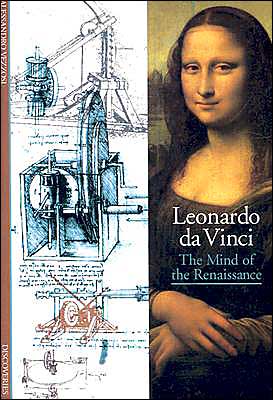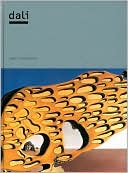Tom and Jack: The Intertwined Lives of Thomas Hart Benton and Jackson Pollock
A groundbreaking portrait of the intense personal and artistic relationship between Thomas Hart Benton and Jackson Pollock, revealing how their friendship changed American art.\ The drip paintings of Jackson Pollock, trailblazing Abstract Expressionist, appear to be the polar opposite of Thomas Hart Benton’s highly figurative Americana. Yet the two men had a close and highly charged relationship dating from Pollock’s days as a student under Benton. Pollock’s first and only formal training...
Search in google:
A groundbreaking portrait of the intense personal and artistic relationship between Thomas Hart Benton and Jackson Pollock, revealing how their friendship changed American art. The drip paintings of Jackson Pollock, trailblazing Abstract Expressionist, appear to be the polar opposite of Thomas Hart Benton’s highly figurative Americana. Yet the two men had a close and highly charged relationship dating from Pollock’s days as a student under Benton. Pollock’s first and only formal training came from Benton, and the older man soon became a surrogate father to Pollock. In true Oedipal fashion, Pollock even fell in love with Benton’s wife. Pollock later broke away from his mentor artistically, rocketing to superstardom with his stunning drip compositions. But he never lost touch with Benton or his ideas—in fact, his breakthrough abstractions reveal a strong debt to Benton’s teachings. I n an epic story that ranges from the cafés and salons of Gertrude Stein’s Paris to the highways of the American West, Henry Adams, acclaimed author of Eakins Revealed, unfolds a poignant personal drama that provides new insights into two of the greatest artists of the twentieth century.Kirkus ReviewsExamination of two brilliant painters whose personal and professional relationship affected the rise of American art in the first half of the 20th century. Adams (American Art/Case Western Reserve Univ.; Eakins Revealed, 2005, etc.) captures the story of the strange symbiosis between Thomas Hart Benton (1889-1975), a regionalist and realist painter, and Jackson Pollock (1912-1956), a trailblazer in early Abstract Expressionism who became world-renowned for the drip-painting technique he used in his later works. On the surface, the two men's creative approach was wholly disparate. Benton favored Americana murals that evoked the working class, creating paintings that made a sharp social statement with vivid color and dynamic movement. Pollock's works suggest universalism within their chaotic sweeps and layers of paint; each seemingly undefined canvas invites the viewer to contemplate both the immensity of imagination as well as the smallness of self. However, the author makes the cogent argument that each painter's artistic viewpoint, and creative technique, stemmed from the same series of influences that include Rodin, Matisse, Russell and MacDonald-Wright, as well as rhythmic and structural components first used by those involved in the Synchromist movement (circa 1912). Pollock absorbed these aesthetic principles as Benton's student, and then executed paintings in an entirely innovative way. This allowed Pollock, a man whose adulthood was marred with what later scholars suspect was bipolar disorder (accompanied by bouts of alcoholism) to position himself as unique in an emerging modern-art scene. The potent combination of timing and talent provided Pollock with an opportunity to expandhis creative reach, and he studied the works of other artists while approaching the most productive period of his life-but he never abandoned those techniques that were instilled in him as an inchoate artist under Benton's tutelage. Though Adams's prose could use some polish, his portrayal of Benton's impact on Pollock's formative thinking brings new light to Pollock's murky process. An interesting story rife with personal drama and satisfying artistic detail. Author appearances in New York and Cleveland. Agent: Sandy Dijkstra/Sandy Dijkstra Literary Agency
\ Kirkus ReviewsExamination of two brilliant painters whose personal and professional relationship affected the rise of American art in the first half of the 20th century. Adams (American Art/Case Western Reserve Univ.; Eakins Revealed, 2005, etc.) captures the story of the strange symbiosis between Thomas Hart Benton (1889-1975), a regionalist and realist painter, and Jackson Pollock (1912-1956), a trailblazer in early Abstract Expressionism who became world-renowned for the drip-painting technique he used in his later works. On the surface, the two men's creative approach was wholly disparate. Benton favored Americana murals that evoked the working class, creating paintings that made a sharp social statement with vivid color and dynamic movement. Pollock's works suggest universalism within their chaotic sweeps and layers of paint; each seemingly undefined canvas invites the viewer to contemplate both the immensity of imagination as well as the smallness of self. However, the author makes the cogent argument that each painter's artistic viewpoint, and creative technique, stemmed from the same series of influences that include Rodin, Matisse, Russell and MacDonald-Wright, as well as rhythmic and structural components first used by those involved in the Synchromist movement (circa 1912). Pollock absorbed these aesthetic principles as Benton's student, and then executed paintings in an entirely innovative way. This allowed Pollock, a man whose adulthood was marred with what later scholars suspect was bipolar disorder (accompanied by bouts of alcoholism) to position himself as unique in an emerging modern-art scene. The potent combination of timing and talent provided Pollock with an opportunity to expandhis creative reach, and he studied the works of other artists while approaching the most productive period of his life-but he never abandoned those techniques that were instilled in him as an inchoate artist under Benton's tutelage. Though Adams's prose could use some polish, his portrayal of Benton's impact on Pollock's formative thinking brings new light to Pollock's murky process. An interesting story rife with personal drama and satisfying artistic detail. Author appearances in New York and Cleveland. Agent: Sandy Dijkstra/Sandy Dijkstra Literary Agency\ \








